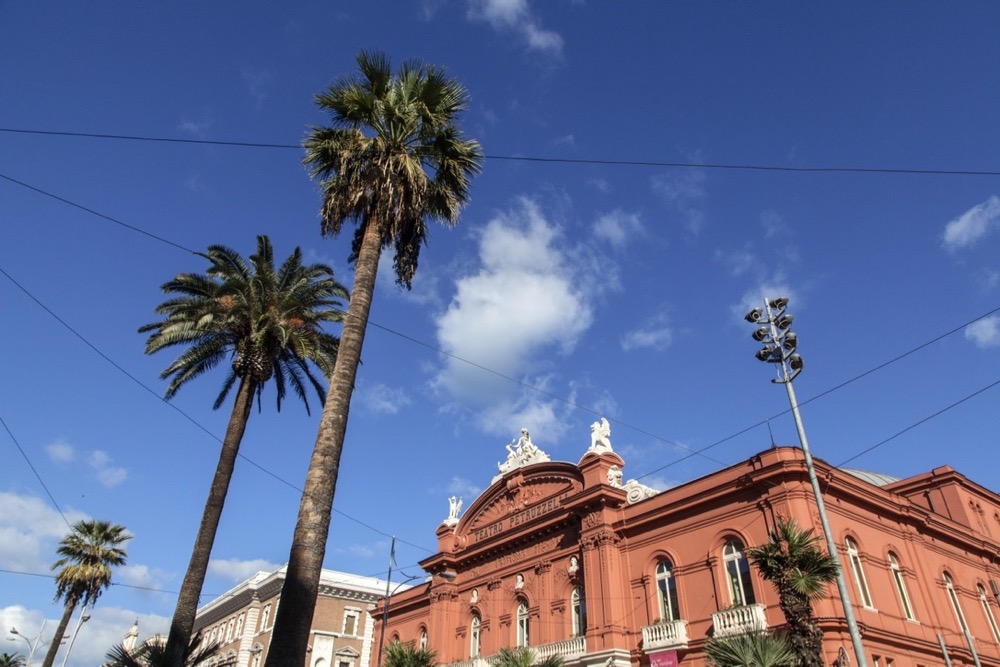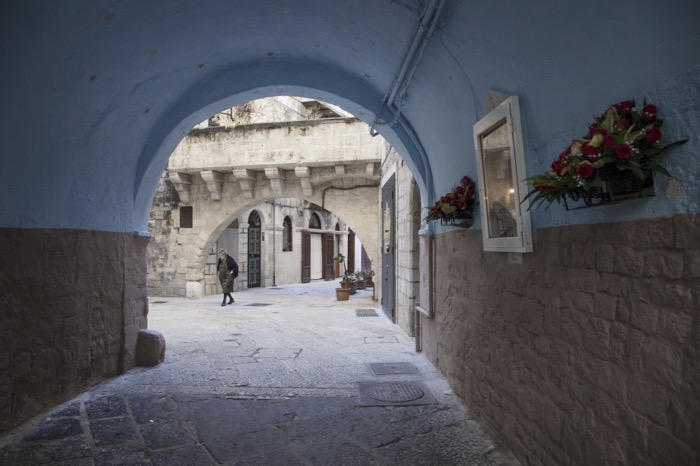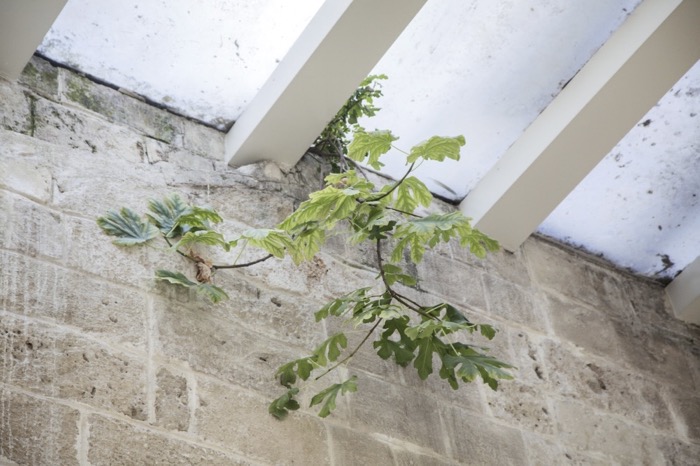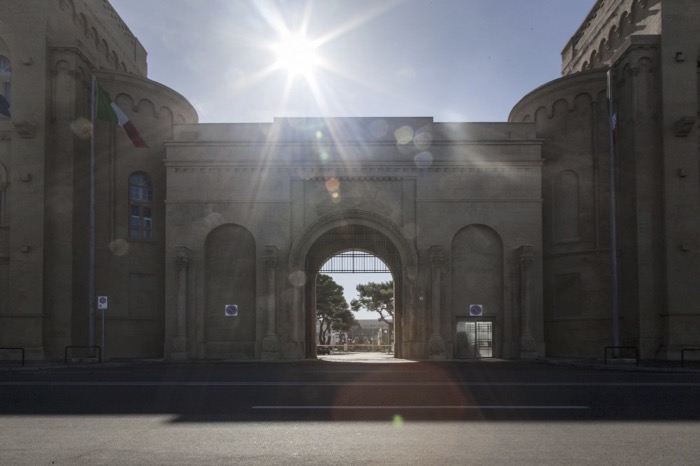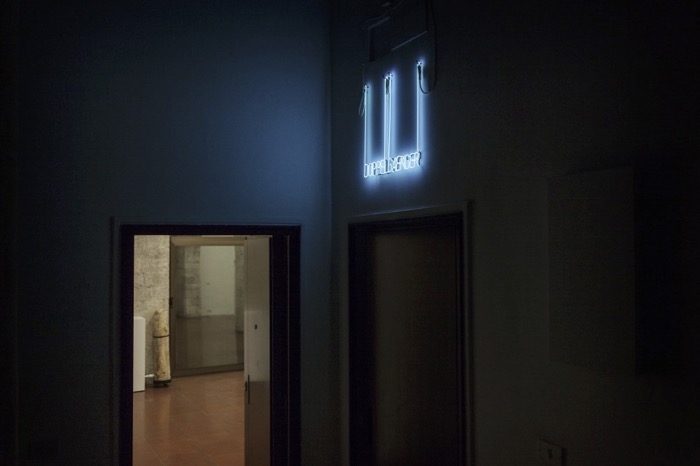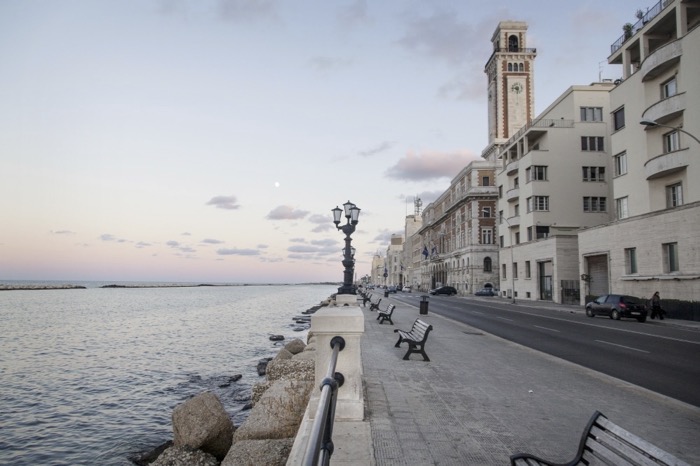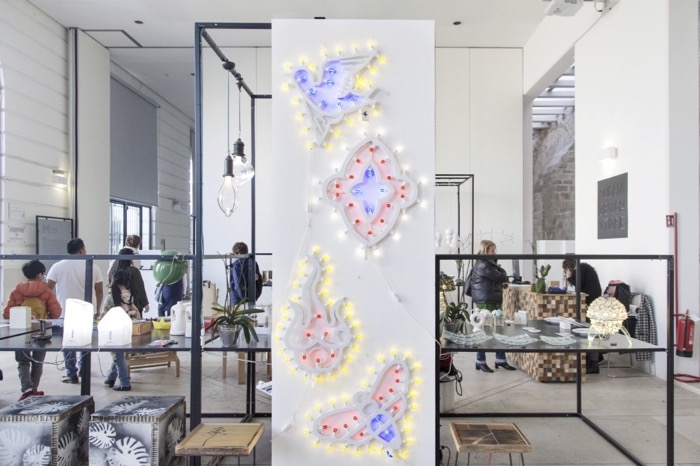“Where are you taking me?” – “I’m taking you to Bari, my dear” – words of Alberto Sordi and Monica Vitti from the famous film “Polvere di Stelle”. Today, the actor and actress are accompanying us on a guided tour around Bari’s magic and mysteries.
We follow them, and follow the salty sea air blowing from the heart of Bari’s old town, up to the medieval towers and small courtyards upon which ever-present madonnas look down and shower their blessings – But back to the film. Alberto Sordi’s 1973 film “Polvere di Stelle” is today the curtain-raiser for us onto the dramatic microcosm of the Teatro Petruzzelli.
The Teatro is Italy’s fourth biggest theatre and is situated on the Corso Cavour, one of Bari’s most elegant boulevards, in the heart of the Murat district. With “Polvere di Stelle”, Apulia’s capital debuted as a full member of the circle of Italian film cities. Having just arrived in town, the film’s two protagonists, capocomico Mimmo Adami and showgirl Dea Dani bow – deeply moved – before the theatre on whose stage they’ll later perform.
I, too, bow in spirit before this architectural beauty, destroyed by arson in 1991 and later rebuilt with its original elements. Another scene from the film was shot in the legendary Albergo delle Nazioni hotel, fondly dubbed the “Ocean Liner” by Bari’s natives because of its orientation to the sea and its striking design. When you head from the old town towards the Lungomare Nazario Sauro, the hotel is the first contemporary building you see on the city’s modern skyline, forming the starting point for a series of magnificent administrative and military buildings.
Bari’s connection with films is much older in purely geographic terms, however. The Cineporto was created on the Lungomare Starita as Apulia’s base for various film crews. It’s situated directly next to the trade fair grounds of the Fiera del Levante and has meanwhile become established as a public centre for art and culture.


